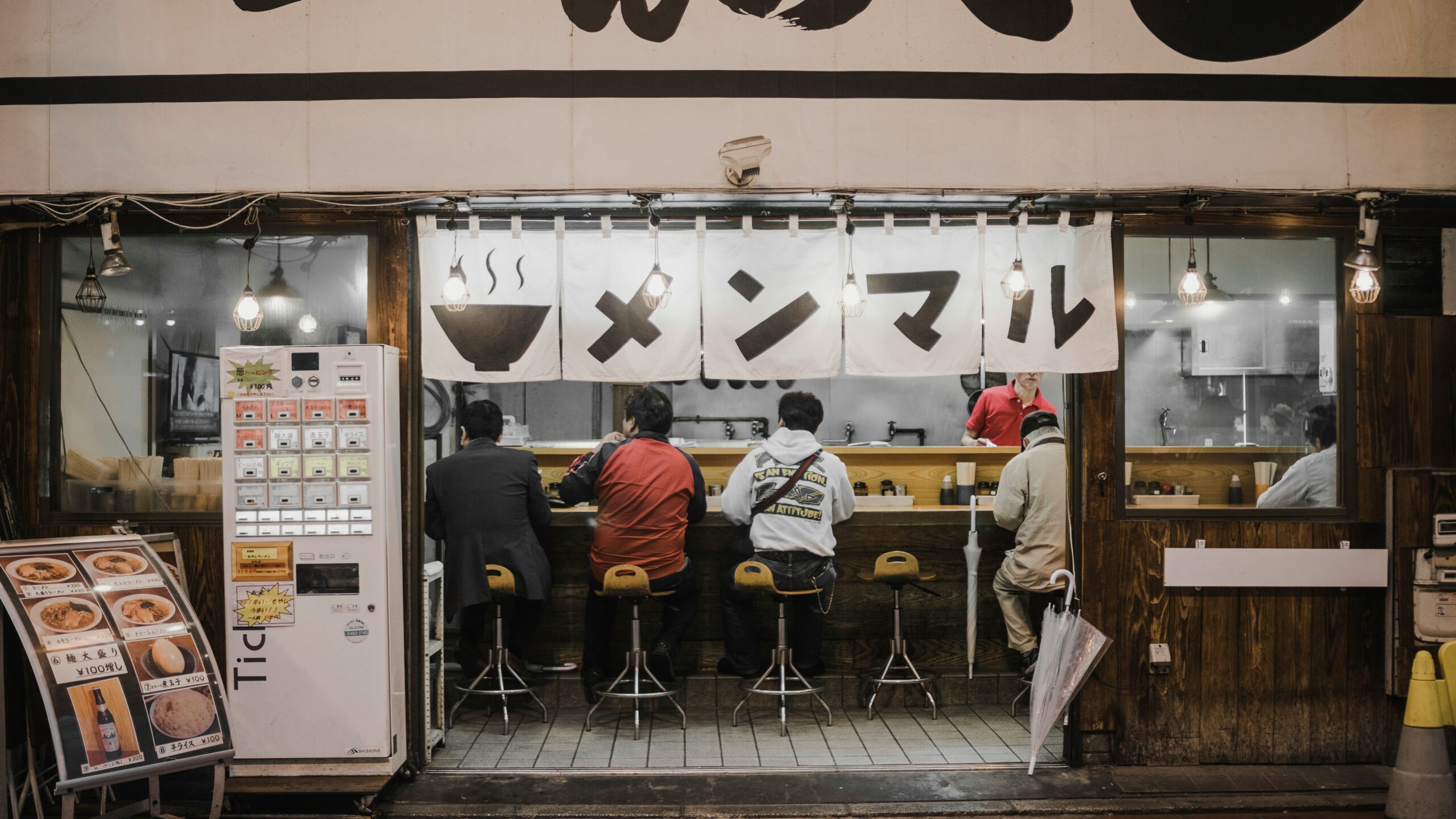In the bustling cities and serene countryside of Japan, a culinary revolution quietly thrives, reshaping notions of dining and solitude. Solo dining, once a fringe practice associated with travelers and business commuters, has blossomed into a cultural phenomenon. Japan, with its unique blend of tradition and innovation, leads this global trend, offering a plethora of dining experiences tailored for the individual diner. This article delves into the rich tapestry of solo dining in Japan, exploring how it transcends mere necessity to become a celebrated aspect of the country’s culinary culture.
Embracing Solo Dining: A Growing Trend in Japan
Solo dining in Japan is not just a matter of convenience; it’s a lifestyle choice for many. With the rise of single-person households and the fast-paced urban lifestyle, more Japanese are finding solace in dining alone. Restaurants and eateries across the country have adapted to cater to this demographic, with designs and services that promote a comfortable and enjoyable solo dining experience. This growing trend is reflective of Japan’s broader societal shifts, where independence and personal space are increasingly valued.
Why Japan Leads the Way in Solo Culinary Experiences
Japan’s leadership in solo dining experiences can be attributed to a combination of cultural, technological, and societal factors. The Japanese have long embraced the concept of "ichiju sansai" (a meal consisting of one soup and three sides) for individual consumption, laying the groundwork for solo dining culture. Coupled with Japan’s technological advancements, which offer seamless dining experiences through vending machine restaurants, app-based ordering, and robot servers, the country provides unmatched convenience for the solo diner. Additionally, Japan’s meticulous attention to detail ensures that quality and service are never compromised, making each solo dining experience unique and memorable.
From Ramen Bars to Kaiten Sushi: Solo Dining Options
Japan offers an array of solo dining options, from ramen bars where diners sit at a counter facing the kitchen, to kaiten sushi restaurants with conveyer belts that deliver food directly to the table. These establishments often feature single seats or booths designed to minimize interaction with others, focusing on the food and personal dining experience. Specialty coffee shops, izakayas with solo seating, and even theme-based restaurants cater to individual diners, offering a variety of settings for solo culinary adventures.
The Rise of Solo Dining: Cultural Shifts and Influences
The rise of solo dining in Japan is closely tied to cultural shifts towards individualism and self-reliance. The traditional Japanese emphasis on harmony and group cohesion is evolving, with younger generations favoring personal space and individual experiences. Economic factors, such as increased workforce participation and the rise of disposable income among single individuals, have also contributed to the growth of solo dining. As a result, dining alone has become a symbol of independence rather than a sign of solitude.
Breaking the Stigma: The Acceptance of Dining Alone
In Japan, the stigma associated with dining alone has significantly diminished. What was once viewed as lonely or antisocial is now considered a moment of peaceful solitude or an opportunity for self-indulgence. Japanese culture, which values discretion and respect for individual preferences, has played a crucial role in this acceptance. Restaurants catering to solo diners often provide discreet service, ensuring a comfortable experience without the pressure of social interaction. This cultural acceptance has encouraged more people to embrace solo dining as a positive choice.
The Art of Solo Dining: Tips for Enjoying a Meal Alone
Solo dining can be an art form, offering a chance to savor not just the food but the experience of dining itself. To fully enjoy a meal alone, it’s recommended to choose a restaurant that caters to solo diners, with comfortable seating and a welcoming atmosphere. Embrace the opportunity to try new dishes and savor each bite without distraction. Bringing a book or journal can enhance the experience, turning a meal into a moment of reflection and relaxation. Most importantly, leave any societal judgments at the door and relish the freedom that comes with dining solo.
Technology and Solo Dining: How Japan Innovates
Japan’s integration of technology into solo dining experiences sets it apart. From automated ordering systems and touch-screen menus to AI-powered service robots, technology has made solo dining more efficient and enjoyable. These innovations not only streamline the dining process but also enhance privacy and convenience for the solo diner. The use of technology also reflects Japan’s forward-thinking approach to addressing demographic changes and evolving dining preferences.
Beyond Convenience: The Psychological Benefits of Solo Dining
Solo dining in Japan offers more than just convenience; it provides psychological benefits, including increased self-awareness and the opportunity for mindfulness. Enjoying a meal alone allows for a break from the digital clutter of daily life, offering a rare moment of tranquility in Japan’s fast-paced society. It encourages diners to focus on the present, savoring the flavors and textures of their meal, and fostering a deeper appreciation for the art of food.
Solo Dining Etiquette: Do’s and Don’ts in Japan
When dining alone in Japan, understanding local etiquette can enhance the experience. Do embrace the quiet and serenity of solo dining, using the time to enjoy your meal and surroundings. Don’t hesitate to ask for recommendations or special items, as many chefs take pride in creating unique dishes for solo diners. It’s also customary to finish your meal and leave promptly, respecting the space for the next solo diner. Remember, the focus is on the food and your personal experience, not on social norms.
Exploring Japan’s Unique Eateries for the Solo Traveler
For the solo traveler in Japan, exploring the country’s unique eateries can be a highlight of the journey. From hole-in-the-wall ramen shops in Tokyo to traditional tea houses in Kyoto, each offers a window into Japan’s diverse culinary culture. Special themed cafes, such as animal cafes or manga cafes, provide unique experiences that are well-suited for solo exploration. These eateries not only serve delicious food but also offer a glimpse into the local lifestyle and customs.
How Solo Dining Enhances the Culinary Journey
Solo dining enhances the culinary journey by allowing for a personalized and introspective dining experience. Without the distractions of conversation or compromise on menu choices, diners can fully immerse themselves in the culinary arts. It offers a chance to connect with local food culture on a deeper level, making each meal a journey of discovery. For culinary enthusiasts, solo dining opens up a world of possibilities, where each dish tells a story and each meal becomes a memorable adventure.
Future of Dining: What Solo Trends Indicate for Global Culture
The solo dining trend in Japan offers insights into the future of dining and global culture. As more people around the world embrace dining alone, the demand for experiences catering to individual diners is likely to increase. This shift could lead to a reevaluation of dining norms, with a greater focus on personal preference and flexibility. Japan’s pioneering approach to solo dining not only reflects its innovative spirit but also highlights a growing appreciation for the joys of solitary experiences in a connected world.
The emergence of solo dining in Japan as a celebrated aspect of its culinary scene is a testament to the country’s innovative spirit and cultural adaptability. Far from being a mere trend, it marks a significant shift in societal norms and dining practices, with implications that resonate far beyond its borders. As the world continues to evolve, the principles of solo dining—embracing solitude, savoring the moment, and celebrating individual choice—offer a refreshing perspective on the art of dining and the joys of experiencing food on one’s own terms.




